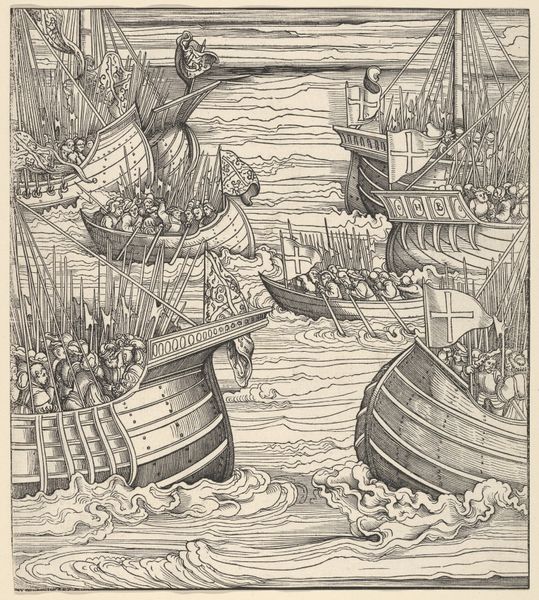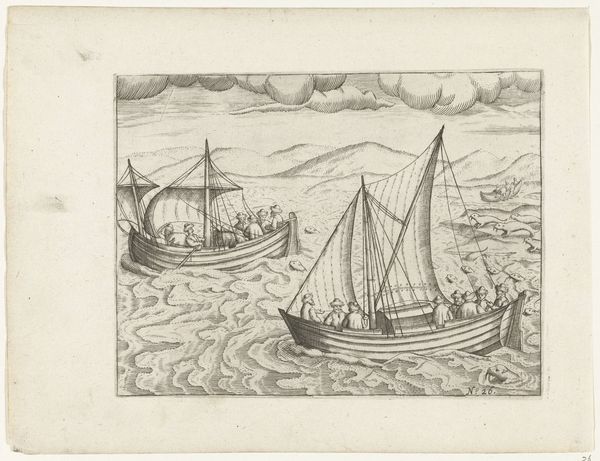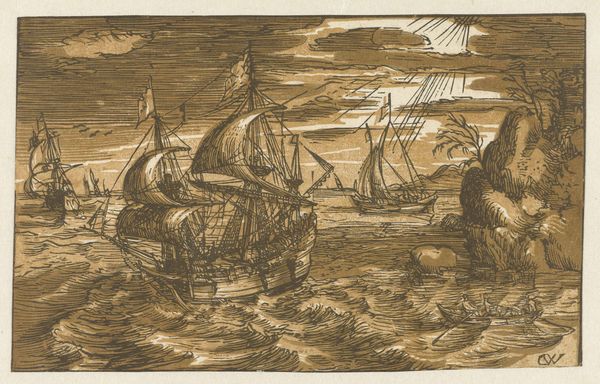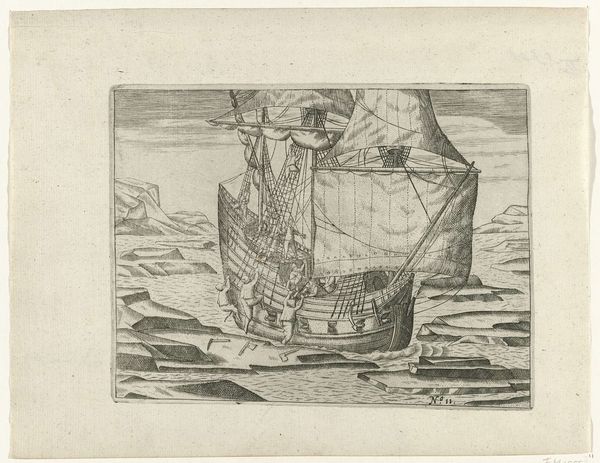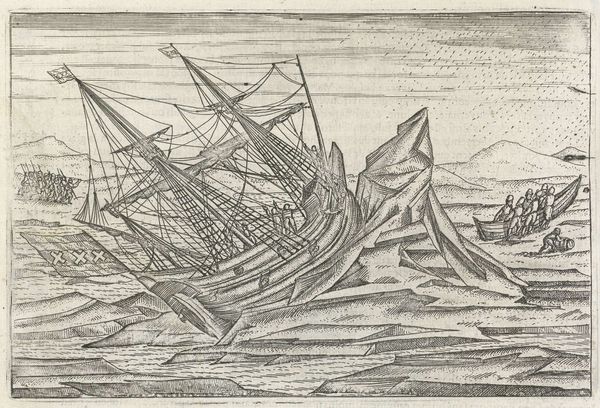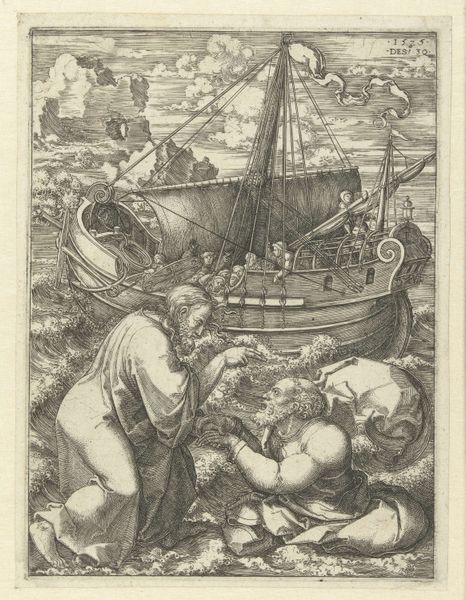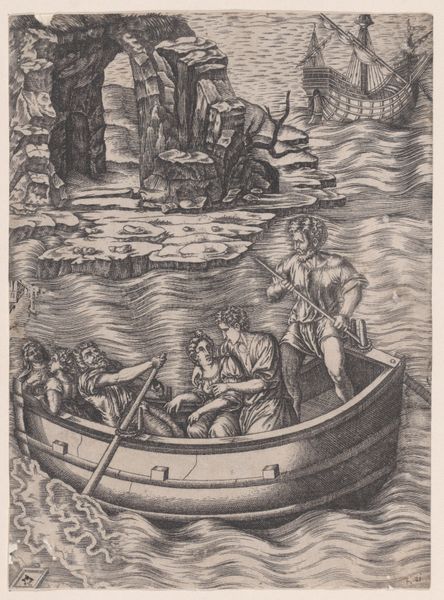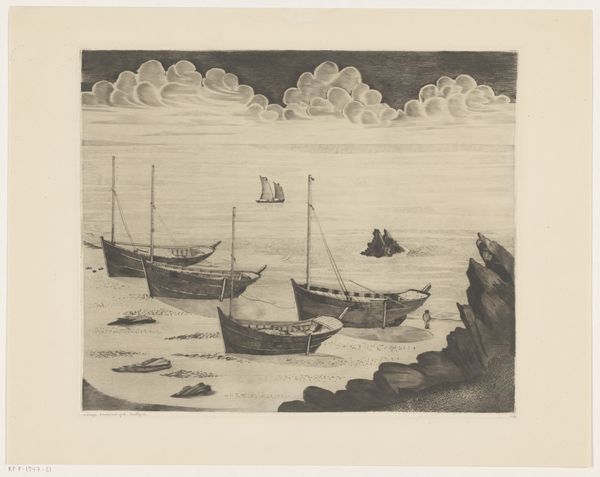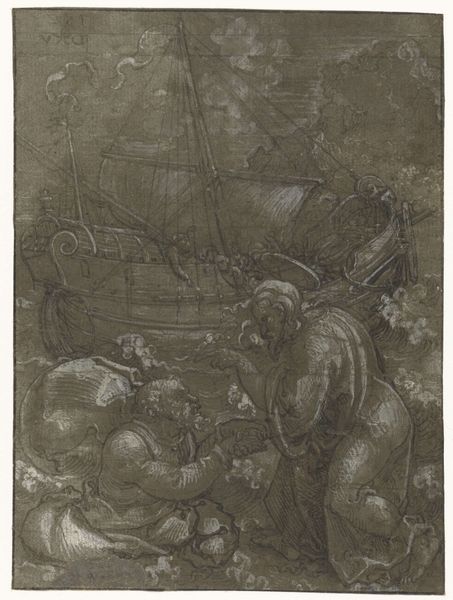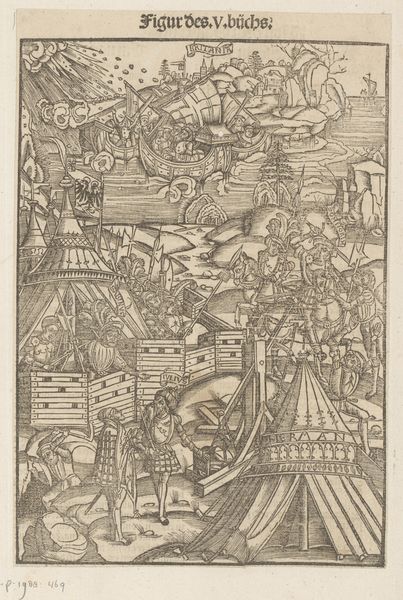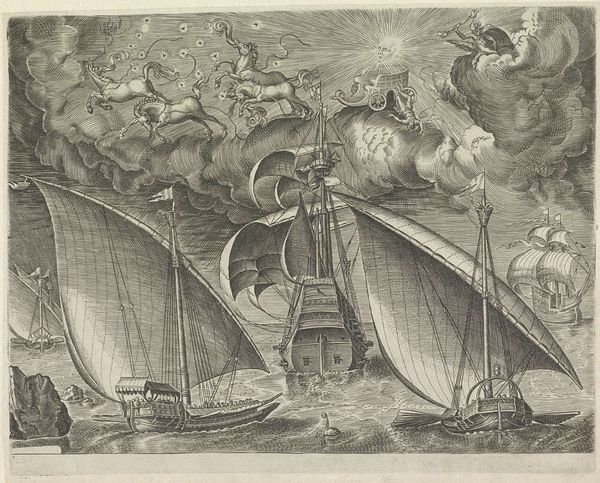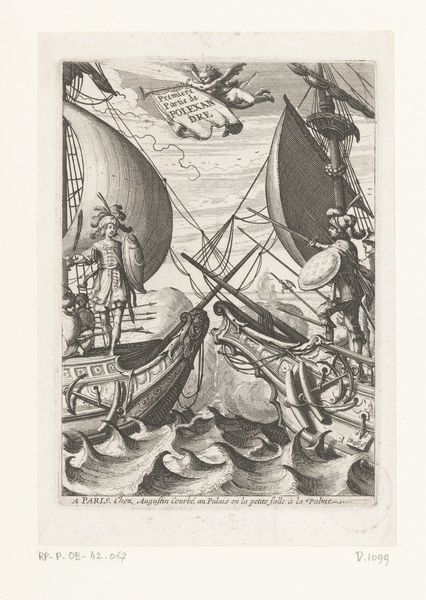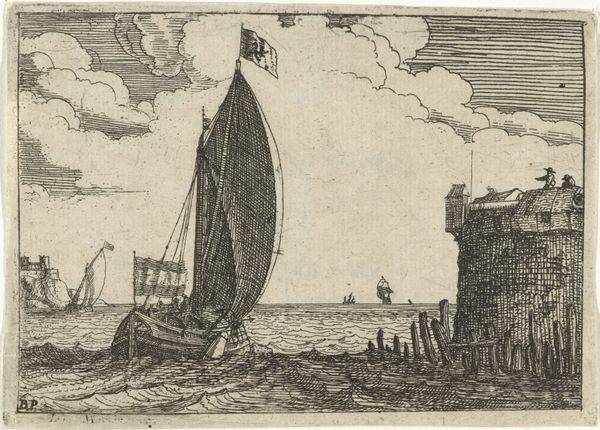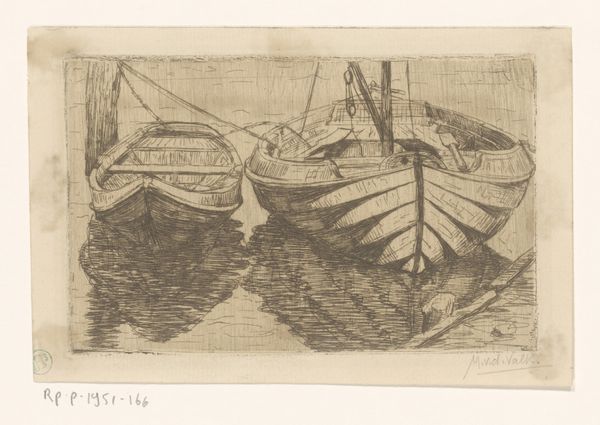
Christ Praying while His Disciples are in a Boat on a Windy Sea c. 1576 - 1580
0:00
0:00
print, intaglio, engraving
# print
#
intaglio
#
landscape
#
mannerism
#
history-painting
#
engraving
Copyright: National Gallery of Art: CC0 1.0
Curator: L\u00e9onard Gaultier’s engraving, “Christ Praying while His Disciples are in a Boat on a Windy Sea,” created around 1576 to 1580, really throws us into the heart of a biblical narrative rendered in the Mannerist style. Editor: My initial reaction is anxiety. The swirling lines of the waves and the precarious tilt of the boat create a sense of unease and immediate danger for everyone on board. It feels like a powerful metaphor for our times too. Curator: It certainly captures a dramatic moment. Gaultier, working within the conventions of 16th-century printmaking, employs intaglio—that is, cutting into the plate—to achieve these intricate details, making it easy to circulate within religious and educated communities. Think about the role this kind of visual storytelling played in shaping perceptions and reaffirming faith. Editor: Absolutely. And beyond the immediate religious context, it also brings up the vulnerability of groups facing systemic challenges, with Christ, on the other hand, on the safe side and praying. Who had power then and who has power now. What narratives get circulated. Curator: But remember, this print wouldn't have existed in a vacuum. It engages with a tradition of maritime imagery and biblical illustration, appealing to a public accustomed to reading theological messages in art. Its distribution surely bolstered established religious institutions. Editor: Agreed, and if we analyze the artistic elements further through an intersectional lens, we see it also engages the male gaze in art history. How the power dynamic between the praying Christ versus the struggling men on the boat reinforce societal power relations of masculinity versus a savior praying somewhere, oblivious of the struggle and asking them to endure while he finds a solution through God. Curator: You are offering quite the critique! Ultimately, analyzing the intersection of religious art with historical, sociopolitical forces shows us just how powerful images were, and continue to be, in the shaping of beliefs. Editor: It’s a useful reminder to analyze imagery through both lenses—the lens of the artwork's production, distribution, and reception, and of power, its ever shifting configurations of dominance and resistance.
Comments
No comments
Be the first to comment and join the conversation on the ultimate creative platform.
